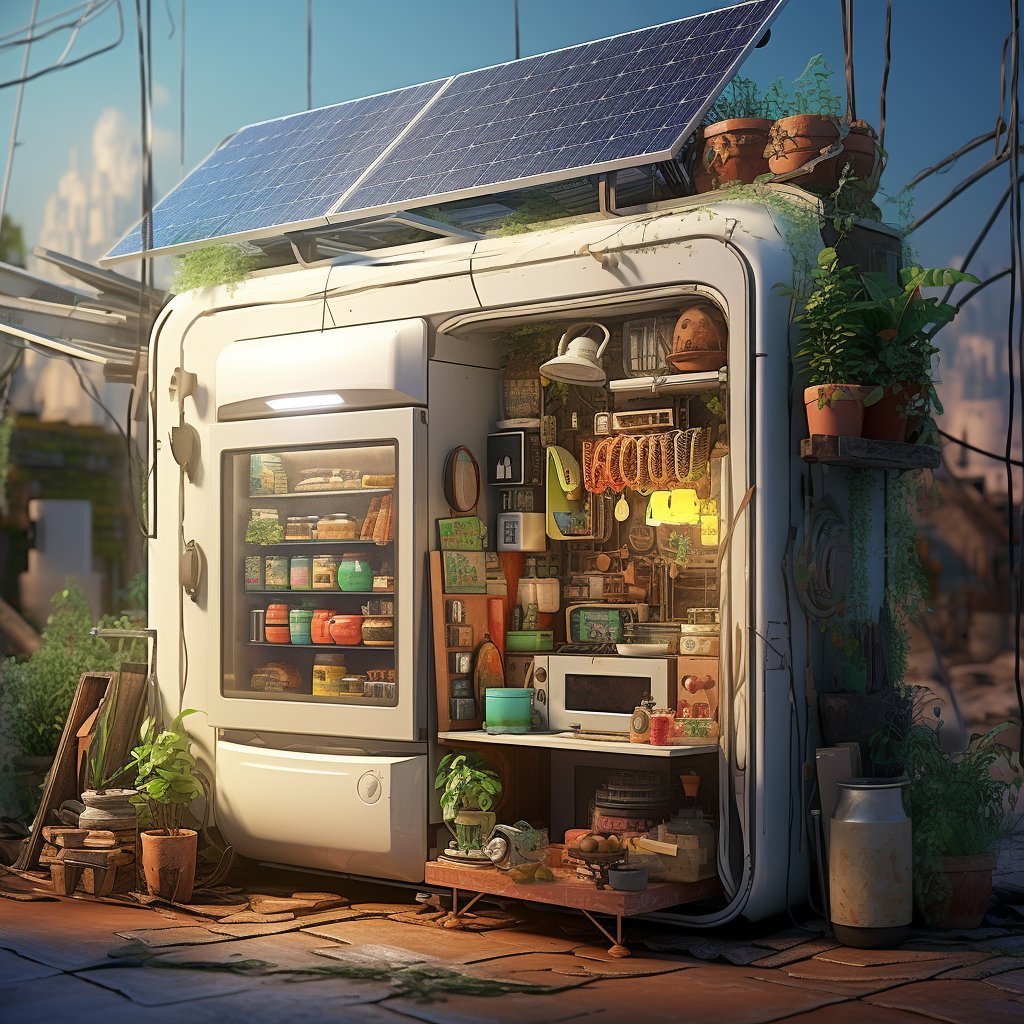Imagine a visionary building at the heart of a self-sustaining community—an architectural marvel that embodies the principles of sustainability, interdependence, and holistic living. This remarkable structure serves as a hub where all essential projects seamlessly come together, forming an interconnected and interdependent system.
At its core, this building incorporates an innovative vertical farming system. Towering gardens thrive within its walls, utilizing advanced hydroponics and vertical farming techniques to produce a wide array of organic fruits, vegetables, and herbs. Natural light floods the space, supplemented by energy-efficient LED lighting that mimics the sun's spectrum. The building's design optimizes air circulation, temperature control, and humidity, creating an ideal environment for abundant and sustainable food production.
Water flows throughout the building, facilitating various essential processes. A state-of-the-art rainwater harvesting system collects and channels rainwater, directing it to purification and filtration systems. These systems provide clean, potable water for the community's consumption, as well as irrigation for the vertical gardens and other water-dependent projects within the building.
Renewable energy is harnessed through a combination of solar panels adorning the building's exterior and wind turbines gracefully integrated into its structure. These energy sources power the building's operations, including the vertical farming systems, lighting, water purification systems, and other electrical needs. Excess energy generated can be stored in efficient battery systems or distributed to other buildings within the community.
Waste management is ingeniously integrated into the building's design. Organic waste from the vertical gardens and community kitchens is processed through innovative anaerobic digestion systems, producing biogas that is used to fuel on-site energy generation. The resulting nutrient-rich compost is then utilized to nourish the gardens, closing the loop of resource utilization and minimizing waste.
Within this multifunctional building, community members have access to educational spaces and workshops where they can learn about sustainable practices, permaculture, renewable energy technologies, and other essential skills. The building serves as a hub for knowledge exchange, fostering a culture of continuous learning and empowerment.
The community's healthcare needs are met through a health and wellness center located within the building. Here, residents have access to comprehensive healthcare services, from preventive care and consultations to alternative therapies and wellness programs. The center incorporates sustainable design elements such as natural lighting, green spaces, and eco-friendly materials, promoting a holistic approach to well-being.
The building also houses a vibrant marketplace that showcases locally produced goods and services. Community members can exchange their products, fostering a resilient local economy and reducing reliance on external sources. The marketplace encourages sustainable practices, with a focus on eco-friendly and fair-trade products.
Through its interconnected systems, this remarkable building serves as a living embodiment of self-sufficiency, sustainability, and community resilience. It fosters a deep sense of interdependence among its occupants, who understand that their individual actions contribute to the overall well-being and sustainability of the community as a whole. This architectural masterpiece inspires and empowers its inhabitants to live in harmony with nature, forging a brighter and more sustainable future.
The structure of this visionary building draws inspiration from Earthship principles, emphasizing sustainable, natural, and recycled materials. It harmoniously combines the concept of an Earthship with innovative design elements, creating a unique and environmentally conscious structure.
The building's walls are constructed using rammed earth or compressed earth blocks, utilizing the surrounding soil and natural resources abundantly available in the area. These materials provide excellent thermal mass properties, helping regulate indoor temperatures by absorbing and releasing heat slowly.
Recycled materials play a significant role in the construction process. Discarded tires, filled with compacted earth, form the foundation walls, providing stability and insulation. These repurposed tires not only reduce waste but also serve as an effective barrier against temperature fluctuations.
Large south-facing windows, a defining feature of Earthship design, allow ample natural light to flood the interior, reducing the need for artificial lighting. These windows are made from double or triple-pane glass, providing insulation while maximizing solar gain in colder climates.
To complete the building envelope, a greenhouse or sunspace is integrated into the structure. This space acts as a thermal buffer, capturing solar heat during the day and releasing it into the building at night. The greenhouse also serves as a nurturing environment for plants, further enhancing the building's self-sustaining capabilities.
The roof of the building is designed to harness rainwater through a carefully planned catchment system. This water is then stored in large cisterns, providing a sustainable water source for the building's various needs, including irrigation and household use. The building's architecture incorporates efficient water filtration and purification systems to ensure a safe and potable water supply.
In line with Earthship principles, the building promotes off-grid living by utilizing renewable energy sources. Photovoltaic solar panels are integrated into the roof or mounted on nearby structures, capturing solar energy to power the building's electrical needs. Wind turbines may also be installed to harness the power of the wind and supplement the energy supply.
Inside the building, natural and non-toxic materials are used for finishes and furnishings. Sustainable and reclaimed wood, bamboo, cork, or recycled materials are employed for flooring, cabinetry, and furniture, promoting a healthy and eco-friendly living environment.
The construction process itself is designed to minimize waste and environmental impact. The building's design allows for efficient use of materials, reducing construction waste. Local and salvaged materials are prioritized, reducing transportation-related carbon emissions. Techniques such as rainwater harvesting during construction can also be implemented to further enhance sustainability.
By combining Earthship principles with innovative design elements, this building exemplifies a sustainable and environmentally conscious approach to construction. It showcases the beauty and versatility of natural and recycled materials while providing a harmonious living space that embodies the principles of self-sufficiency, sustainability, and interdependence with the natural world.



